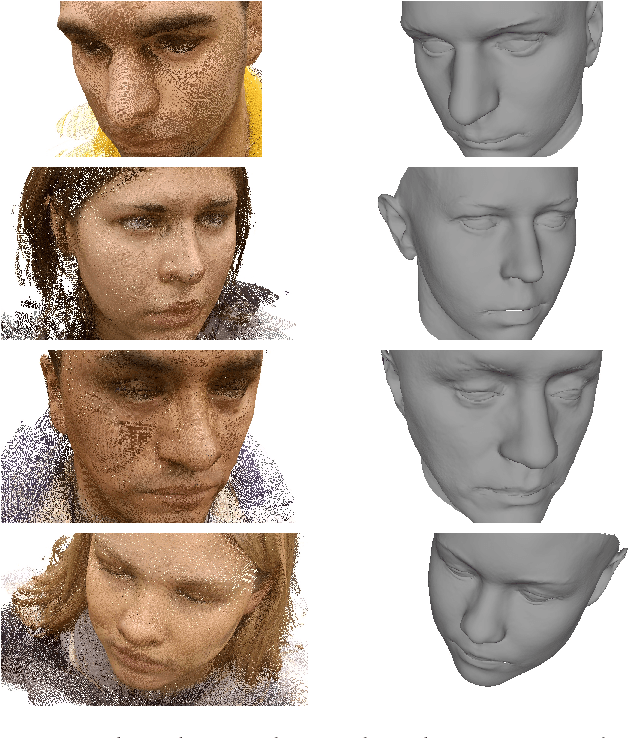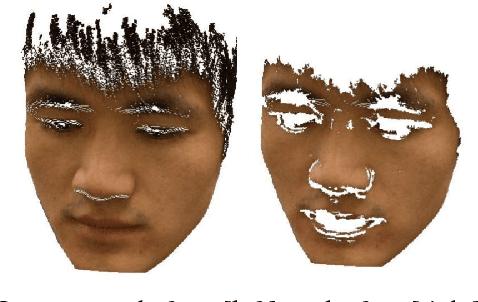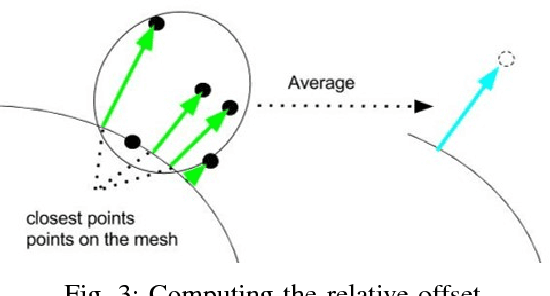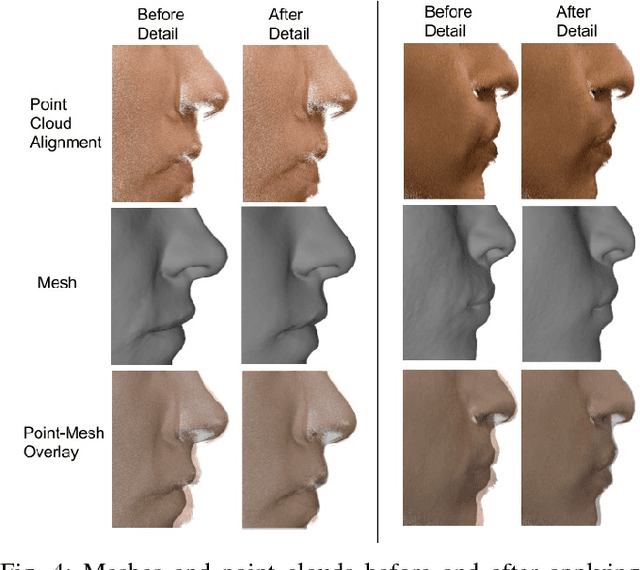Robust Registration and Geometry Estimation from Unstructured Facial Scans
Paper and Code
Aug 17, 2017



Commercial off the shelf (COTS) 3D scanners are capable of generating point clouds covering visible portions of a face with sub-millimeter accuracy at close range, but lack the coverage and specialized anatomic registration provided by more expensive 3D facial scanners. We demonstrate an effective pipeline for joint alignment of multiple unstructured 3D point clouds and registration to a parameterized 3D model which represents shape variation of the human head. Most algorithms separate the problems of pose estimation and mesh warping, however we propose a new iterative method where these steps are interwoven. Error decreases with each iteration, showing the proposed approach is effective in improving geometry and alignment. The approach described is used to align the NDOff-2007 dataset, which contains 7,358 individual scans at various poses of 396 subjects. The dataset has a number of full profile scans which are correctly aligned and contribute directly to the associated mesh geometry. The dataset in its raw form contains a significant number of mislabeled scans, which are identified and corrected based on alignment error using the proposed algorithm. The average point to surface distance between the aligned scans and the produced geometries is one half millimeter.
 Add to Chrome
Add to Chrome Add to Firefox
Add to Firefox Add to Edge
Add to Edge